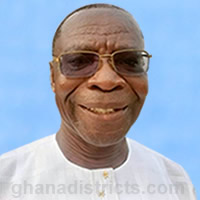Good Governance
The Atiwa West District Assembly is one of the Districts Assemblies in the Eastern Region of Ghana. The District was granted its present status by the Legislative Instrument (LI) 1784 of 2004 It is composed of thirty four (34) Electoral Areas and further divided into Seven (7) Area Councils and thirty four (34) Unit Committees spread throughout the District.
The General Assembly
The Assembly, which is the highest deliberative, legislative and executive authority in the District, is composed of fifty-one (51) members, made of thirty four (34) elected on non-partisan basis ,fifteen (15) appointed by government, Two (2) Members of Parliament representing Atiwa East and West constituencies of the district and the District Chief Executive.
There are eight (8) sub-committees of the Assembly and they are; Social Services, Works, Finance and Administration, Development Planning, House, Agriculture, Justice and Security and Budget. Reports from these sub-committees are submitted to the Executive Committee which is presided over by the District Chief Executive.
Sub-District Structures
In line with the objective of achieving complete decentralization, Seven (7) Area Councils and a total of thirty four (34) Unit Committees have been established in the District to deepen grassroots participation in governance. Only one Area Council (Anyinam) has office accommodation. The Assembly has provided them with computers and other office equipment. The District Assembly has also ceded some revenue areas to them for collection and keeps 50% of whatever they collect for their own local development.
The Area Councils still face a lot of challenges and chiefly among them include; office accommodation, inadequate funding and means of transport. These affect the execution of their functions such as resource identification/mobilization, registration of births and deaths, mobilization of communities to undertake local development activities, etc. Measures such as the provision of funding and means of transport, training and logistics are required to make these structures function effectively to enable them contribute the development of the district
Public Sector Institutions in the District
A sizeable number of other institutions and organizations have been established and operating in the District to provide services that are geared towards promoting good governance. They include the National Commission of Civic Education (NCCE), Electoral Commission (EC), District Police Command, and Atiwa West District Health Insurance Scheme (ATDHIS) and the Traditional Authority. The District has two (2) magistrate courts located at Kwabeng and Anyinam, and National Ambulance Service with one van stationed at Anyinam. One fire service station without an office and the necessary equipment resources located at Anyinam. Measures are required to improve the infrastructure for the security. There is the need to provide office and residential accommodation, fire tender, logistics and office equipment to enhance the communication links between the public and the security agencies.
The Administrative Set-up
The Office of the District Assembly established under Local Government Act 656 of 2003 is the bureaucratic nerve centre of the Assembly. The District Chief Executive is the political and administrative head of the institution. The District Co-ordinating Director is the head of the bureaucracy and provides guidance and direction to all the eleven (11) Decentralised Departments of the District. The administrative structure is composed of the General Administration, District Planning Co-ordinating Unit, Finance Unit, Budget Unit, Internal Audit, Works Department and Environmental Sanitation Unit.
Decentralized Departments
Nine (9) out of the statutory eleven (11) decentralized departments that are required by law to be established in the District are in operation. Lack of office and residential accommodation, qualified and skilled personnel and inadequate funds, office equipment and logistics are found to be the main challenges as shown in table above. While there is the need for the District Assembly to put in strategies to improve the capacities of the existing staff, it should also lobby for the postings of qualified and skilled staff to the District.
Gender Analysis and Mainstreaming
Gender mainstreaming is one of the social development issues receiving much attention in the international media, academia and among the gender activities. The gender mainstreaming is to becoming gender sensitive by creating equal opportunities for both sexes and the vulnerable individual in all fields of endeavour.
Gender equality is offering men and women, boys and girls equal rights, opportunities in everything they do to influence, participate and benefit from development. Men and women have the capacity to do whatever each one wants to do irrespective of sex. Equality is a pre-condition for effective and sustainable people-centred development. Many times there is a gap between policy statements and the way in which organizations raises money and organizes participation in the formulation of new policies, legislation and the consequent allocation of resources in the budgets.
This has been attributed to factors that negate equal participation in economic processes and decision making, inequitable distribution of development resources particularly to less productive sectors, declining land sizes and soil fertility, the scourge of HIV/AIDS, among others. A Gender Responsive Budgeting Initiative is seen as one way to cover this gap, and ensuring that public money is raised and spent effectively.
The analysis of gender sensitivity of the Atiwa West District Assembly does not look good as conscious is not made to mainstream gender in the policy and programme formulation and implementation. The below table which shows the gender composition of the Atiwa West District Assembly since its establishment buttress the above assertion. The table below shows that the average female representation of the three Assembly sessions of the constitutes only 21.7 percent of the total membership of the Assembly except in 2006-2009 session where the female composition exceeded 30 percent.
Again, the analysis of financial assistance to brilliant and needy children shows that in 2010 out of four-two students who received financial assistants, thirty (30) were male while only twelve (12) were female. However, in 2011 management made conscious effort to be more gender sensitive by giving more financial assistance to female needy students.
And as result, out of forty (40) students who received financial assistance in 2011, twenty-two (22) female and eighteen (18) males were male. On the whole the District Assembly has not been gender sensitive as expected in order to give equal opportunities to both sexes in the development process. Some of key area the Planning Team identified during situational analysis would be addressed in the programme of action included the following:
- Sensitization of women to aspire for leadership positions including local politics
- Promotion of girl education in the district
- Advocacy for nomination of more female to be appointed as Assembly members by Government
- Adoption affirmative action in the appointment of individuals to serve on committee
- Adoption of affirmative action in award of scholarships to female needy children
- Strengthening of non- formal education in the district to enhance adult female literacy
Sensitization of children and women right in the district.
Date Created : 11/23/2017 6:18:23 AM





 facebook
facebook X (twitter)
X (twitter) Youtube
Youtube +233 593 831 280
+233 593 831 280 0800 430 430
0800 430 430 GPS: GE-231-4383
GPS: GE-231-4383 info@ghanadistricts.com
info@ghanadistricts.com Box GP1044, Accra, Ghana
Box GP1044, Accra, Ghana